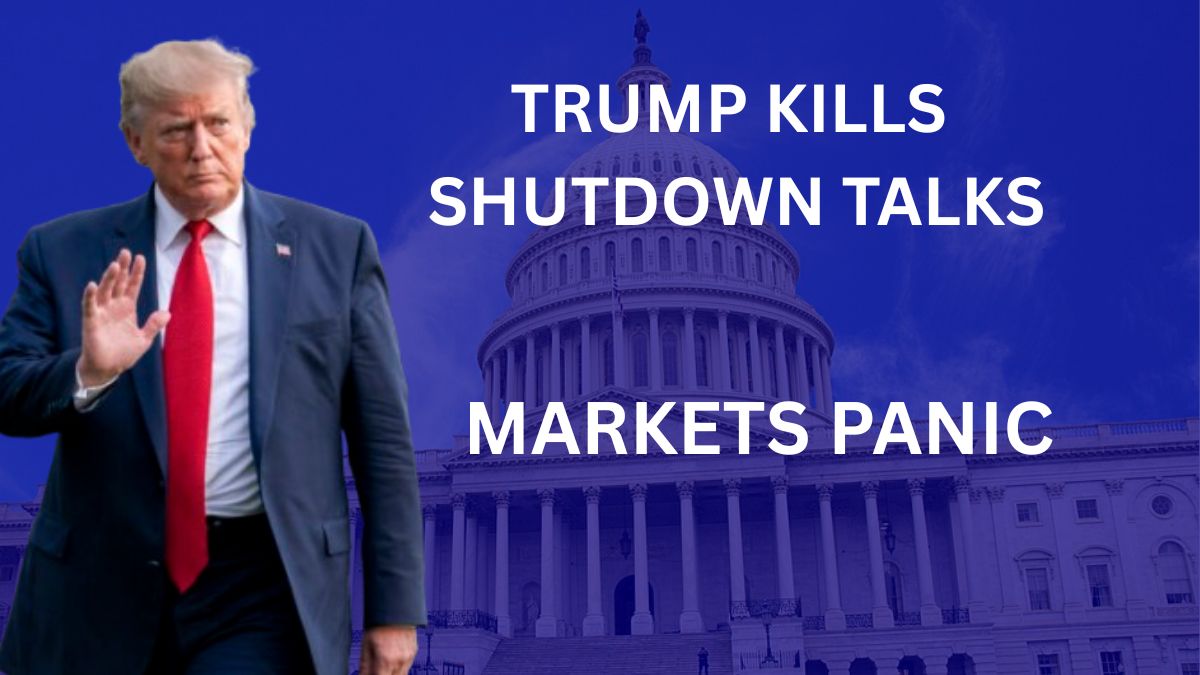This is getting intense. Just when we thought there might be some progress on avoiding a government shutdown, President Trump completely pulled the plug on scheduled negotiations with Democratic leaders. The meeting was supposed to happen Thursday, but Trump killed it today with a Truth Social post that’s already sending ripples through the markets.
What Actually Happened
Trump posted on Truth Social, saying “after reviewing the details of what he called the unserious and ridiculous demands being made by the minority radical left Democrats in return for.rising
Wait, this actually caught me off guard. The timing here is crazy – we’re looking at a potential October 1st shutdown, and now the key players aren’t even talking. Here’s what’s really going on behind the scenes.
Republicans need at least seven Senate Democrats to get current government funding extended for several weeks while they work out a more detailed plan for the 2026 fiscal year. Without those Democratic votes, the whole thing falls apart.
Schumer Fires Back Hard
Senate Majority Leader Chuck Schumer didn’t hold back in his response. He said Trump is “running away from the negotiating table before he even gets there.” But here’s the kicker – Schumer went further with his criticism.
The way I see it, this is classic political theater, but the market implications are very real. When government officials start using language like “tantrum” and “ridiculous demands,” you know the negotiations have completely broken down.
Critical Timeline and Market Impact
Senators return to DC on September 29th – that’s cutting it extremely close to the October 1st deadline. Republicans are planning another vote for their backed measure to continue current government funding until November 21st.
But here’s what becomes clear from Schumer’s position: unless there’s some healthcare component included in the funding measure, Democrats aren’t budging. The transcript cuts off mid-sentence when discussing Schumer’s healthcare demands, but the implication is obvious – this is a major sticking point.
What This Means for Markets
Looking at the numbers and recent government shutdown patterns, markets typically see volatility increase significantly in the weeks leading up to potential shutdowns. The S&P has performed well this year, but government funding uncertainty always creates headwinds.
Think about it – we’re talking about a shutdown that could last weeks if neither side compromises. Federal operations grinding to a halt, government workers furloughed, and economic uncertainty just as we head into the final quarter of the year.
The pattern suggests we’ll see increased market volatility as September 29th approaches. Defense contractors, government services companies, and federal employee-heavy regions typically get hit first when shutdown talk heats up.
The Political Chess Game
What stands out here is how both sides are already positioning for blame. Trump’s framing this as Democrats making “unserious and ridiculous demands,” while Democrats are painting Trump as unwilling to negotiate. Neither side wants to be seen as causing a shutdown, but both seem prepared to let it happen if they don’t get what they want.
This points to a prolonged standoff. When you have this level of rhetoric flying around before negotiations even start, compromise becomes much harder to achieve.
The evidence shows that government shutdowns typically last longer when there’s this much animosity between party leaders. We could be looking at weeks, not days, if this October 1st deadline passes without resolution.
Something’s happening here that goes beyond typical political posturing. The complete breakdown in communication between Trump and Democratic leadership suggests deeper issues that won’t be resolved with last-minute deals.
Markets hate uncertainty, and right now, that’s exactly what we’re getting served up with less than two weeks until a potential shutdown.
